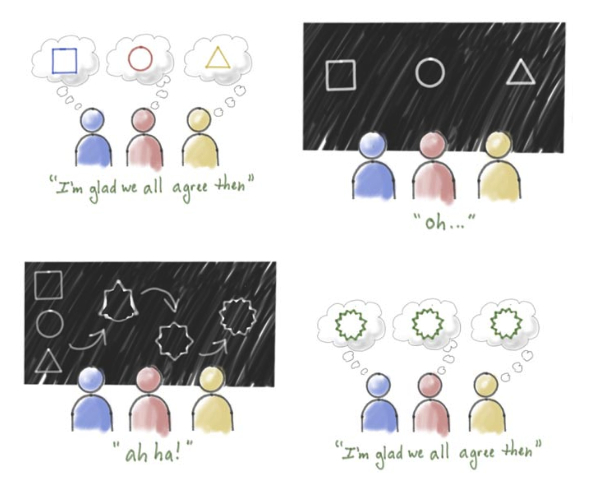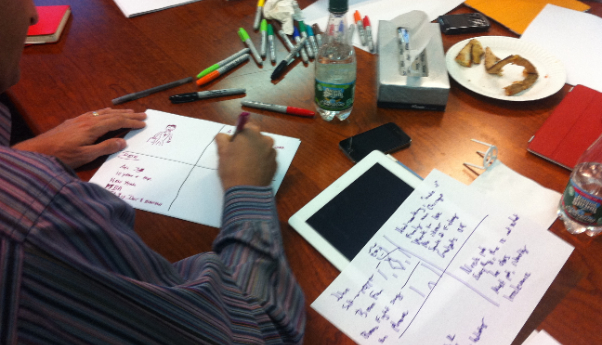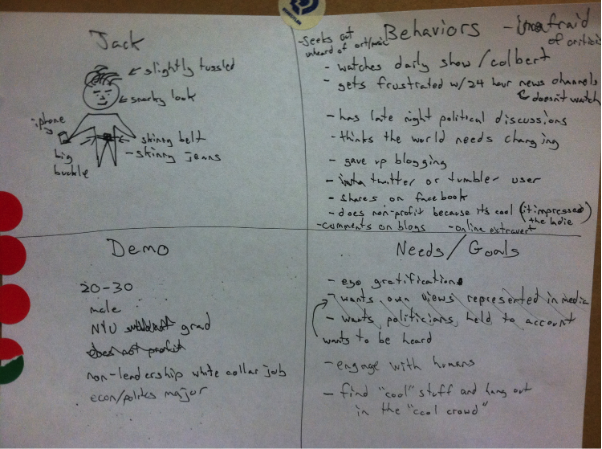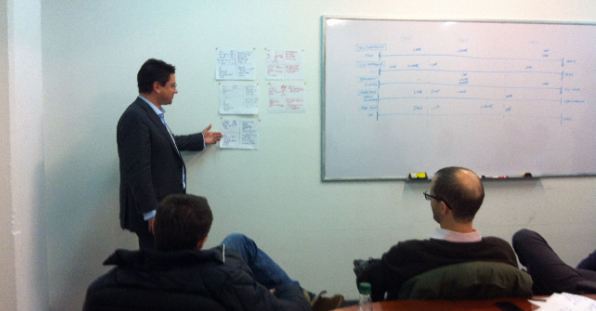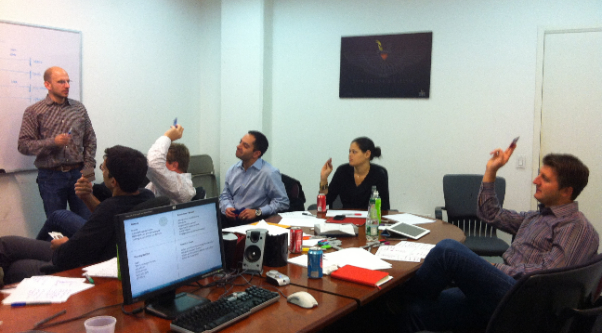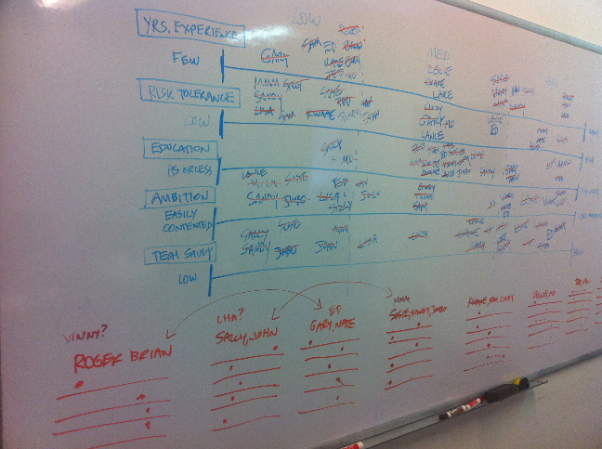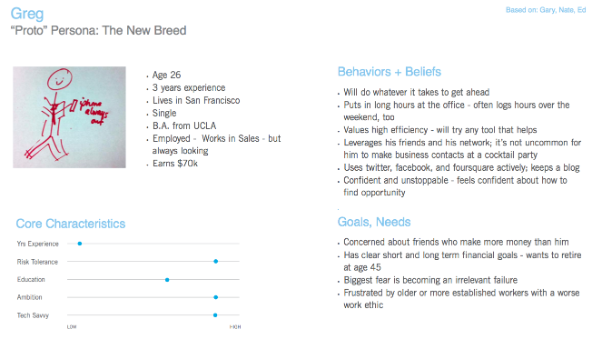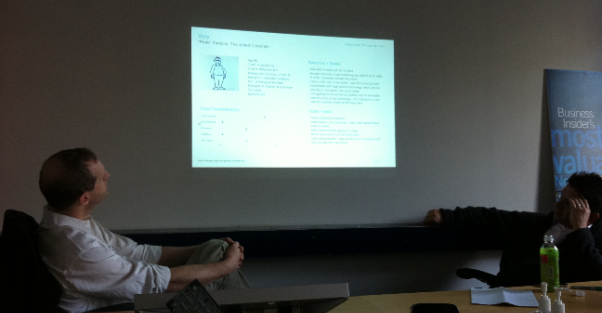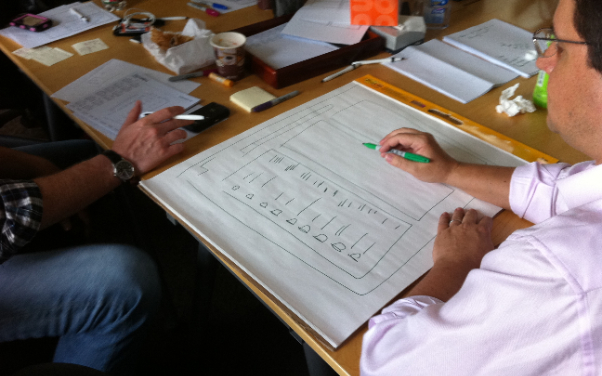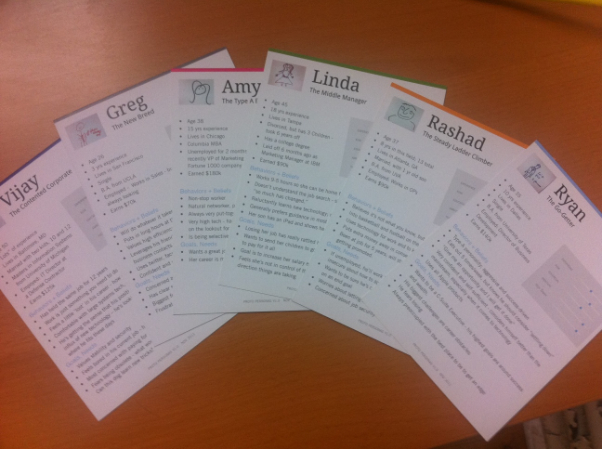When working in-house as a UX practitioner, one of the constant challenges is getting a seat at the leadership table. Without a VP or C-level champion who is specifically focused on UX, the alternative is often a proxy-champion such as the VP of Product, or even a marketing executive. Without a consistent voice of the customer present in executive discussions, corporate strategy, and product direction, decisions are debated and made based on each executive’s responsibilities and professional perspectives. The marketing executive will push for marketing initiatives important to meeting her goals, while the customer service champion will push for greater support for his department, and so on for each department present in these meetings. The VP of Product should, in many cases, be the customer’s representative at these meetings but, unless they come from a UX background, they’re likely not speaking directly to customer need.
Consideration of the customer and how management decisions affect them should be a constant part of the executive outlook. There are many ways to re-focus the executive team on customers. Periodically exposing them to recordings of usability testing sessions and focus groups, or occasionally having the UX team brief and train them will help execs stay aware of how well customer needs are being met by the company’s current offerings.
Another effective way of getting execs back in tune with the customer is the practice of creating personas. Traditional personas are usually heavily researched to create validated representations of the company’s target audience which are then packaged up and presented in a tidy report to the company’s leadership. They are time-consuming and expensive to create. Especially at smaller organizations or ones that aren’t fully sold on user research, this can mean that personas won’t be developed, or funded sufficiently. For situations such as these, an alternative type of persona can be valuable: the proto-persona.
Proto-personas are a variant of the typical persona, with the important difference that they are not initially the result of user research. Instead, they originate from brainstorming workshops where company participants try to encapsulate the organization’s beliefs (based on their domain expertise and gut feeling) about who is using their product or service and what is motivating them to do so. Proto-personas give an organization a starting point from which to begin evaluating their products and to create some early design hypotheses. They’re also helpful in initiating and reinforcing corporate awareness of the customer’s point of view to ensure it’s included in strategic planning. This is especially true when the creators of these proto-personas are in a position to affect the company’s strategic direction.
Once proto-personas are created and agreed upon, it is imperative that researchers then take them into the field to begin validating their accuracy. As holes are poked into the original persona hypotheses, they are revamped and rewritten. Ideally, all product design activities are then refocused on the current theories of who the users actually are. The initial value in producing proto-personas derives from the exercise of producing them, which restores the focus of an organization back onto the customer.
This article explains how to build and refine proto-personas. This exercise should be run with your executive team so they benefit from the discovery and thought process that goes into personas, and so the outcomes are products of their own efforts and hence are more likely to be valued by executives in future decision-making. The proto-personas will be refined and improved through user research later so they can be used with more confidence by product teams, but their roots in the boardroom also wins the confidence of management.
via Jeff Patton & Luke Barrett who re-created the cartoon from an unknown origin.
Before You Begin: Build a Proposal
The formality of your proposal will depend on your relationship with your executive team, but having a proposal is necessary in all cases. State your objectives, motivations, process, and how much time the proto-persona workshop will take. It’s best to build some support in advance by checking in with executives individually so when the proposal is put up for consideration (a discussion for which you will likely not be present) you have a champion or two in the room.
The proto-persona workshop will take place over the course of two days, so ensure you are asking for enough time on each day and that they are not too far apart; one day a week in two consecutive weeks works best.
Day 1: Proto-Persona Creation
On the first day, bring the team of executives together for a three hour session, beginning with a short introductory presentation. The presentation should convey that the purpose of the proto-persona workshop is to look at the company from the customer’s point of view and to articulate who the customers are and what needs they have that affect the company. Introduce the executive team to the concept of an ad-hoc persona as a representation of the archetypal “people” they believe will be their customers now and in the future. It is also important to stress that these will be ad-hoc personas (aka provisional personas) and not scientifically proven customer archetypes. Nevertheless, the proto-personas will be reference points that the team can use as lenses through which customer-centric perspectives can be seen in ongoing planning and decision-making processes.
Conclude this initial introduction of proto-personas with visual examples of what they will be creating. Here is an example of a finished proto-persona:
Image courtesy Grasshopper Herder
The top-left quadrant is for a sketch of the individual, a name, and some basic demographics.
The top-right quadrant is for behaviors and beliefs of the persona.
The bottom-left quadrant is for demographics.
The bottom-right quadrant is for needs and goals.
Give the team 15 minutes to create as many personas as they can, or that they feel are necessary.
Once complete, the executives present their personas to the team by reading each out loud and sticking it up on a wall. The team then provides feedback on which qualities of each persona are realistic or unrealistic, and on-the-spot adjustments are made.
Next, ask the team to determine where each persona is positioned on five different spectrums. The spectrums should consist of defining characteristics of the user base and should be amenable to plotting on a spectrum (i.e., don’t use binary decision points). For example, one spectrum might be a customer-specific characteristic such as years of experience with your product or within your industry. Another good example of a persona spectrum is tech savviness. Find attributes that not only allow the company to differentiate between different personas but that are also relevant to your products and services.
Next, allow the executives to vote for where on each spectrum the current persona being discussed falls. To make this easier, you can provide them with low, medium, and high choices or ask them to select values from 1 to 5. A fun way to get the team to participate in this process is to give them playing cards labeled with the values 1, 3, and 5 for people to hold up to indicate their votes.
If there is immediate consensus, minimal discussion will be required. If, however, there are outliers or a broad distribution of opinion, the team should be encouraged to discuss and debate those issues. As conversations take place and opinions shift, real-time adjustments can be made to the personas posted on the walls and where they fall on each spectrum.
With each discussion of attributes for each persona, a decision is made where they belong on each spectrum. The persona’s name is then written along the spectrum on the whiteboard to indicate the decision. Almost instantly, patterns begin to form. There are clear clusters and clear outliers, and by the end of the three-hour exercise you will have a board filled with personas and persona names mapped to spectrums.
Executives tend to fall back to their traditional points of view based on their responsibilities, so as a moderator it is your job to bring the focus back to the customers. One thing to keep an eye out for is the group’s tendency to present their feedback and insights to the moderator as opposed to their teammates. The team should debate each other, not you, so ensure the conversation is being redirected as needed.
End the exercise by thanking the team and letting them go for the day. At this point you are likely left with a relatively large number of personas. They will include duplicates and similar personas. You must now spend the next few days consolidating the personas into a smaller, more manageable group based on their spectrum distributions. The goal is to end up with 3-5 personas. Any more than that and the focus of the team will start to drift along with the validity of the personas created.
Day 2 – Persona Verification and Design Studio
The second workshop day begins by going over the consolidated set of personas. Send the executive team the consolidated persona deck well in advance of the meeting so they will (hopefully) come in prepared to discuss. Project each persona on the wall and begin a vigorous discussion around its validity not only as a “real” person but also as a customer that you want to support moving forward.
The team should review each persona in detail and make adjustments in real-time to settle on a representation that everyone can agree upon. The team works until they can agree that the final set of personas accurately portray the spectrum of customers they’d like to service.
The second half of the second day’s exercise is a Design Studio. Many articles have been written about how to run these so I won’t go into specifics here, however it’s worth noting that there will likely not be enough time to run a full Design Studio. Some modification will be necessary to accommodate the time constraints of your executive audience.
Design Studio is used here to give the team a chance to create a product offering for the perceived target audience they’ve spent time creating. This can be a landing page, a home page, or a core workflow in a product or service. The goal here is for the team to rally around the proto-personas and take them out for a test drive and to eventually converge on a single version of the item they are designing. This centers the team on the needs of this newly defined audience.
Wrapping Up & Following Up
After dismissing and thanking the team, follow up shortly after with a summary email that recaps their activities and the themes they found. In addition, reiterate that the proto-personas they produced represent their assumptions and beliefs, and that they will be refined over time. The proto-personas will be used to guide recruiting for usability studies, compared against other customer samples, and updated and adjusted as research uncovers characteristics of real customers that conflict with the original assumptions and beliefs.
It can also be helpful to create a printed deck of proto-persona cards for the executives to use to bring these ideas into any executive meeting, especially the ones where representatives of the UX team are not present.

Conclusion
The proto-persona exercise serves several goals. Initially, it will introduce the executive team to the concept of personas and thinking from a customer-centric point of view. In addition, it will align the executive team around a target audience and get them to debate and agree upon value propositions that serve the needs and goals of that audience.
As well, this exercise brings design thinking, gamestorming, and traditional UX practices into the executive suite. These types of tactics give UX a stronger foothold at the executive level and increase the likelihood that the customer’s point of view will figure more prominently in strategic decisions.
Jeff Gothelf will be giving a talk at the UX Lx conference in Lisbon (May 16-18) titled Lean UX: Getting Out of the Deliverables Business.


